AMD Budget
Leaving the entry-level sector behind and with a budget of under $800, our options increase significantly. Our aim here is to provide a configuration that allows for a nice balance of performance at stock speeds. This doesn't mean you have to spend over $800 though, as prices have dropped in the past year and performance for the dollar has definitely increased. Both budget systems are under $800 complete, with the basic box under $500 in both cases. This gives you the option to increase graphics power or go for a larger monitor (or both) and still be less than $1000. The assembled system is balanced for a wide variety of computing tasks, but final tweaks can tilt it toward gaming and graphics for example, if that is what you aim for.
Generally we consider PC Gaming rigs to begin at the next price category (i.e. the low end of midrange), but adding a decent graphics card and a larger monitor will definitely make one of these budget systems a good choice for entry gaming at around $1000. If that is your goal take a look at the Phenom II Guide for help in selecting a graphics card and display for your price point.
| AMD Budget PC | ||
| Hardware | Component | Price |
| Processor | AMD Phenom II X3 720 BE (2.8GHzx3, 3x512KB L2, 6MB L3 Cache) |
$145 |
| Cooling | CPU Retail HSF | $- |
| Video | On-Board | $- |
| Motherboard | Biostar TForce TA790GX3 A2+ | $110 |
| Memory | OCZ Fatal1ty Edition 4GB DDR2-1066 OCZ2F10664GK ($28 after rebate) | $43 |
| Hard Drive | WD Caviar GP WD5000AACS 500GB | $59 |
| Optical Drive | Samsung 22X DVDRW/DL SH-S202G | $25 |
| Audio | On-Board | $- |
| Case | Cooler Master Elite 330 RC-330-KKN1-GP Mid Tower | $40 |
| Power Supply | BFG Tech LS Series LS-550 550W SLI Certified, CrossFire Ready, 80 PLUS Certified ($20 Rebate) | $60 |
| Base System Total | $482 | |
| Display | ViewSonic VX2233wm Black 21.5" 5ms Widescreen 16:9 LCD (1920x1080) | $170 |
| Speakers | Logitech R-20 12 Watts RMS 2.1 Multimedia Speaker | $18 |
| Input | Microsoft CA9-00001 Black PS/2 Standard Keyboard and Optical USB/PS2 Mouse - OEM | $16 |
| Operating System | Microsoft Vista Home Premium OEM | $99 |
| Complete System Bottom Line | $785 | |
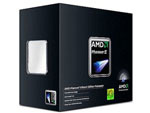 |
While the GPU is the most important factor in game performance, the CPU is also a factor. To make sure the CPU is not a bottleneck now or in the near future should you upgrade your budget PC, a Black Edition Phenom II X3 is the CPU choice. The Phenom II 720 Black Edition has an unlocked multiplier should you choose to overclock, which makes overclocking as simple as it gets. It is rated at 2.8GHz with 3x512KB L2 cache, and 6MB of L3 cache. As a 45nm Phenom II it is also a dynamite overclocker - in fact it is the same CPU we recommended in our Phenom II OC system just a few weeks ago.
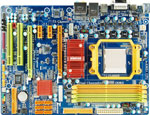 |
We've paired the Phenom II 720 BE with the Biostar TForce TA790GX3 A2+, a perfect match for those looking to squeeze as much performance out of their money as possible. The Biostar is loaded with overclocking features and features integrated AMD HD 3300 graphics with an HDMI/DVI interface and 1080P support. This means very decent performance using the onboard graphics. Biostar offers both AM2+ and AM3 CPU support for processors like the Phenom II 720BE when used with cheaper DDR2 memory. Biostar includes 128MB DDR2 sideport memory for improved GPU performance, Realtek ALC 888 HD Audio codec, Gigabit LAN, 16GB memory support, six 3Gb/s ports capable of RAID 0/1/10/5, 10 USB ports, two PCI-E x16 slots (dual x8 CF), two PCI-E x1 slots, and two PCI slots. The BIOS caters to the casual overclocker and this board performs very well in a variety of tests.
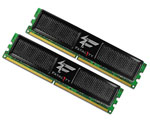 |
We've chosen OCZ Fatal1ty Edition 4GB DDR2 1066 (PC2 8500) in a 4GB kit for $43. This is a great value in DDR2-1000 memory from a top memory supplier. Right now it's an even better deal with a $15 rebate that lowers your net price to $28. The extra 1066 speed lets you run your memory at a faster speed or provide reserves for overclocking the CPU. OCZ is a great memory choice, but there are many memory options at great prices today. Quality DDR2-800 and DDR2-1000 RAM from Corsair, OCZ, G.Skill, Mushkin, and Geil are available at any of the major online retailers. Just be sure to look for RAM with better timings if you can afford it.
The remaining components are the same as our entry systems. The hard drive remains a 500GB Western Digital. If you'd prefer a longer warranty, look at Seagate, which includes a 5-year warranty on some of their drives for a few dollars more. The DVD burner remains the same Samsung 22X.
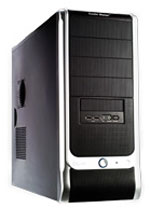 |
The case receives an upgrade with the selection of the Cooler Master Elite 330 and our AnandTech Gold Editors Choice BFG Tech LS Series LS-550 550W power supply. The BFG currently has a $20 rebate which reduces the final cost to $60. The BFG 550W is a great power supply, but you could save a few dollars here with an OCZ, Corsair, or PC Power and Cooling PSU, which are often on rebate in recent months. It all depends on the timing of your system purchase.
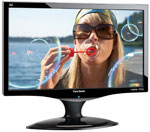 |
The LCD display was an easy choice with the full HD high resolution Viewsonic 22" 16:9 widescreen for just $170. A 21.5" monitor with 1920x1080 resolution with a 3-year warranty from a major monitor maker is certainly a good value. If you prefer a larger screen you can find a 24" widescreen starting at $250, though most are $300 or more. If you need to save a few dollars a lower resolution 19" or 20" would do.
 |
If you want more video power for gaming you can add an ATI HD 4830 for just $75-$90. This will get you into gaming and it is a terrific value at this price according to our Graphics Editor. He recommends the Radeon HD 4850 as the start of true HD gaming starting at just $120 or a Radeon HD 4870 512MB which you can find for as little as $155. Any of the three cards would still keep your total well below $1000. The 4870 addition totals just $940 for an extremely capable 1920x1080 system complete with a Viewsonic 1080P monitor.










66 Comments
View All Comments
7Enigma - Monday, March 16, 2009 - link
I think you're splitting hairs. Both of their Budget systems are fine for gaming if you add in a discrete graphics card. And in both system descriptions they mention adding a graphics card. Reading between the lines means add a graphics card and you have a gaming rig.Pretty simple.
frozentundra123456 - Monday, March 16, 2009 - link
With prices so low, I would say to include a mid-range graphics card such as the HD4670 with any system. The 4670 uses very little power and will improve video and allow decent basic gaming for less than 100.00 additional cost. It seems it is worth this even for the lowest end system which would still cost about 500.00 with monitor and OS and no graphics card.Hrel - Monday, March 16, 2009 - link
You can get a 640GB Hard Drive from Seagate with 32MB of cache, a 7200rpm speed and SATA connection for $60. So, 500GB or 640GB for $60? Hm, tough choice... sarcasm.MrSpadge - Saturday, March 21, 2009 - link
I agree, the systems should have faster HDDs! I'd choose the WD 640 GB 7200 rpm over the Seagate for speed. The WD green power has amazingly tuned firmware and it's faster than many elder 7200 rpm dirves, but it's not a magician and is held back by its 5400 rpm.Just think for a moment what limits the performance of a PC under "normal" use. What happens when you get to an elder machine, even with a healthy windows? Well, if you tell it to do anything you'll be greated by a constant "crrrrrrrr" from the HDD. Not the CPU or GPU is limiting, it's the HDD! That's why going with a 5400 rpm drive is almost silly.. you give up 15 - 20% speed and gain ~3W in power consumption. For the HTPC it's alright though, as it doesn't keep you from working if you have to wait for the HDD.
Hrel - Monday, March 16, 2009 - link
sorry, my bad, that drive is $70 now; it was $60 dollars like week ago though.AntiM - Monday, March 16, 2009 - link
I would say that 85% or more people could get by just fine with these machines. They are perfect for simple office machines. You could probably go even cheaper on the AMD system with an Athlon 64 X2 5600+ and 2 GB or RAM and still have plenty of horsepower for an office machine.Wesley Fink - Monday, March 16, 2009 - link
You can definitely go lower on the AMD CPU, but do you really think anyone would want to pay $67 for a 5600+ or 5600 Brisbane, when they can get a 7750 Kuma Black Edition for $7 LESS at $60. Pricing in entry space can be very strange.I also think dropping RAM from 4GB to 2GB is not very cost effective when you save just $17 by halving the RAM. If every penny counts I guess that that $17 could be important.
AgeOfPanic - Monday, March 16, 2009 - link
With the decoding capabilities of the current IGP chipsets why choose a Phenom processor with higher TDP over a Athlon X2 5050E?Penti - Tuesday, March 17, 2009 - link
A lot of people use homebrew (unlicensed) codecs for warez and their video watching. Those are usually software only or have a limited support for DXVA. Like many alternative media-portal/center software. If you don't want that flexibility there are other devices that even play warez that might fit your bill. But it's only commercial codecs that has decent hardware acceleration. You might also need the power for recording and encoding.7Enigma - Monday, March 16, 2009 - link
I think the answer is, "because we can". Honestly for a true HTPC the last article was fine, and nothing has really changed since then IMO. Yes you can for the same money get a more powerful system or even slightly cheaper, but the HTPC's job is not to be more and more powerful for the same/less money, it's to be cool and quiet while allowing for 1080p and all the resolutions below.Where the latest HTPC systems are beneficial is if you are using the HTPC box to rip or encode to different compressed formats while simultaneously watching something else, and/or recording multiple signals. Then it will be beneficial to have the Phenom II 3-core over a lowly X2.